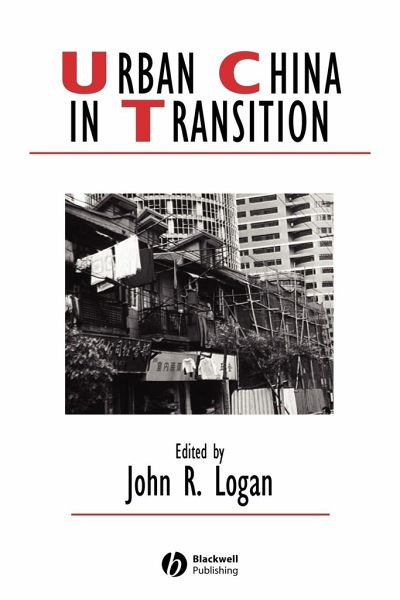
Urban China in Transition
Versandkostenfrei!
Versandfertig in über 4 Wochen
40,99 €
inkl. MwSt.
Weitere Ausgaben:

PAYBACK Punkte
20 °P sammeln!
Using an innovative approach, this book interprets the unprecedented transformation of contemporary China s major cities. It deals with a diversity of trends and analyzes their sources. Every chapter is co-authored by an urban China expert and an "outside" expert on the wider topic. Together they offer a broad historical and theoretical comparison.
China is rapidly becoming a world power. No longer a developing country, China's cities are undergoing transformations of historic proportions. This book, in the Studies in Urban and Social Change series, evaluates these multi-dimensional changes. With input from professionals in a variety of fields, including Sociology, Geography, Economics, Demography, Planning, Architecture and Anthropology, Urban China in Transition analyzes Chinese trends in diverse topics including:
_ Migration,
_ Crime,
_ Gated Communities,
_ Neighborhood Associations,
_ Suburbanization, and
_ Women's status.
Chapters are co-authored by experts on urban Chinese life together with others whose expertise is on the particular topic. Comparisons to urban areas in the United States, Eastern Europe, Asia, and South America pose thoughtful questions about the possible trajectory of Chinese urban development, while underscoring its uniqueness. The result is abroad theoretical and historical perspective that sharply focuses the Chinese experience through alternative prisms, thus enriching theoretical discussion and debate.
_ Migration,
_ Crime,
_ Gated Communities,
_ Neighborhood Associations,
_ Suburbanization, and
_ Women's status.
Chapters are co-authored by experts on urban Chinese life together with others whose expertise is on the particular topic. Comparisons to urban areas in the United States, Eastern Europe, Asia, and South America pose thoughtful questions about the possible trajectory of Chinese urban development, while underscoring its uniqueness. The result is abroad theoretical and historical perspective that sharply focuses the Chinese experience through alternative prisms, thus enriching theoretical discussion and debate.


